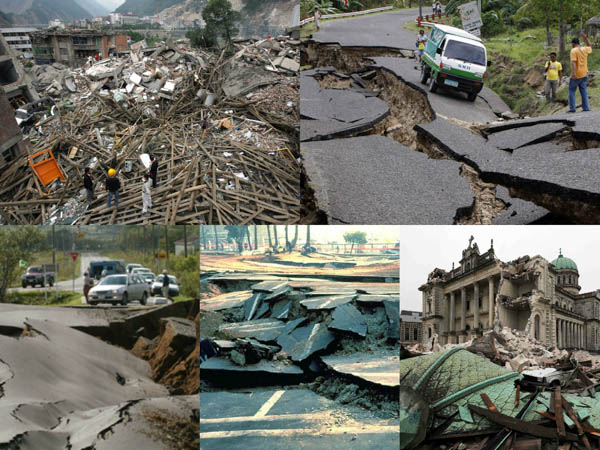Photo by: Will Gentry
The frequency of Oklahoman earthquakes is on the rise, and with it have arose several theories about the oil industry’s possible involvement.
The primary suspect for Oklahoma’s current seismic instability is fracking. Formally known as hydraulic fracturing, this process is used primarily by the oil industry to increase the flow of procurable gas in an oil well.
“They drill horizontally and then it’s a short well, 10,000 feet into the ground,” senior engineering major Austin Lowry said. “Then they pump high-pressure hydraulic fluid into the ground. We are talking about major pressures, but over a very small area.”
According to an article in The New York Times entitled “The Facts on Fracking,” of the tens of thousands of locations with fracking wells, approximately eight have experienced earthquakes, none of which were strong enough to cause significant damage.
“The best analogy [for fracking] is for instance, as I talk to you, air is literally moving and hitting you in the face – but there’s no way you can feel it,” Lowry said. “If we were standing on ice and I started talking to you, chances are you’re not going to start moving backwards, because the vibration and the sound of my voice and the air molecules moving toward you are actually moving you. You’re not going to even notice it. There’s probably not even enough energy there to move you.”
Amanda Nichols, associate professor of chemistry, disagreed.
“If you’re [applying pressure] in just the right spot, you could [cause instability],” Nichols said. “Fault lines … branch out into other fault lines, so sometimes … when one part of the fault line is really active, that stress of them moving can affect the ones they are branched to.”
The Nemaha Ridge fault line runs underneath Oklahoma and is expected to have multiple branches yet to be uncovered.
“That’s why they’ve put more seismographs out,” Nichols said. “There’s talk that there’s probably hidden fault lines that we didn’t know existed, because they haven’t been active and now they are active. Fault lines can become active, not because we’re causing it, but that it’s just time; they’re on some sort of cycle.
Senior engineering major Jason Brunner believes fracking shouldn’t be ruled out as a possible cause.
“If these earthquakes keep happening and there’s fracking in the area, it seems like there’s some correlation [and] to ignore that doesn’t really make sense,” Brunner said. “We should definitely be looking into what assumptions [the oil industry] has made in rethinking the boundaries they’ve set [for fracking].”
Fracking is prevalent in the United States. According to “The Facts on Fracking,” nearly a million wells have been fracked since the 1940s. This type of drilling activity primarily takes place in the high shale regions in North Dakota’s Bakken formation, the Permian Basin in Texas and New York’s Marcellus formation.
“When it comes down to fracking, we see a lot of activity in North Dakota and the Marcellus, and we’re getting some earthquakes over in the Marcellus,” Lowry said. “But … [in terms of earthquakes] Oklahoma has a significant rise, we’ve got Texas with a little bit, though not near as much, but up here in the Bakken – this is where the most fracking happens, period, in the entire United States – that is the lowest activity in the rise of earthquakes.”
As such, the studies have yet to provide conclusive evidence linking fracking to the rise in earthquakes.
“So far, what we know isn’t supporting that fracking is causing the earthquakes,” Nichols said. “If fracking is causing them, why wasn’t it causing them before now?”
Nichols said that the earthquakes might just be normal seismic activity.
“I would just say this fault line is getting active,” Nichols said. “Probably it’s just the cycle that it’s on. We’re in an area that when there’s activity, the cycles usually last several years, and that’s why we’re like, ‘Oh this is a new thing,’ but maybe 20 years ago it wasn’t a new thing.”
Others have surmised that Oklahoma’s outbreak of earthquakes could be a result of different factors.
“In the fall, when we had those really big earthquakes, I was reading a few articles and there was a geologist hypothesizing that the bigger ones were because of the rising and falling of Lake Arcadia,” senior Hannah Bingham said. “He suggested that the general instability was probably from fracking, and then those larger ones were more because of rapid increase and then decrease of the water line because of the rain over the summer.”
Some Oklahoma residents are not worried about future seismic activity.
“I’m all for fracking if it causes more earthquakes, because I love earthquakes,” Brunner said. “I don’t want San Francisco earthquakes, because those are dangerous, but Oklahoma ones are so fun.”















Be First to Comment